QuestionI recently purchased a 7 year old Quarter horse mare, who has only
experienced riding with the bit. Unfortunately, I have ridden my horses
these past 19 years with a rawhide bosal/mercate and know little about the
bit...except I don't like them. Mainly because, as I watched the gal who I
bought the horse from, jerk down hard on the reins to get the horse to pay
attention.. I knew she was using the pain method to get her horse to stand
still, which I'm very against.
I have no idea how to get my mare used to a bosal and was wondering what
your suggestions may be, or what your opinion is regarding a bit. I have a D
ring French link snaffle right now.
Answer
 Tracking up!
Tracking up!
Hi Melanie!
A bit or a hackamore (bosal), side pull, really anything you put on your horse to communicate with him is only as gentle, sensitive or harsh and rude as the hands on the other end. It is not the bit, but the nut behind the bit!
A bosal is a more advanced step for a horse. We use certain tools, ei: bits, bosals, bridle bits, as a means to teach and communicate. So many people do not even know why we use these things and in what order they should come in the education of the horse.
We start colts in a snaffle bit because it allows us to be kindergarten clear with the horse. We can establish the connection between the rein and the foot on each side and teach the horse the connection between his leg, our leg, the reins, our seat, shifts in weight and pressure. If you notice how a bosal is built and how the mecate is tied on, you will realize that you can end up with a very strange bend and some really malformed muscles if you use the bosal too soon in the horses education. The bosal is the step that comes AFTER you have completed all of your work in the snaffle bit. Your horse is more educated, softer and understands very clearly the legs and seat and can move all four quadrants of his body with little influence from the mecate rein attached to the bosal. From the bosal the horse is then moved into the two-rein. This is the spade bit or some sort of finished bridle bit and the bosal. And finally, the true bridle horse when finished will be straight up in the bridle. Most good hands will use some sort of silver, hand crafted spade bit at this point. Your horse will be going with what should be invisible cues. Your legs will be his legs. If you are riding a finished dressage horse, you will be in the double bridle. However, if your horse is against the hand and your cues can be seen, if there is any degree of pulling or a brace...your progressed too soon and you should be stepping back a level or two until you get things just exactly right.
Most people never need to progress out of the snaffle bit. It is clear, comfortable and fair to the horse. The horse should not have to guess at what the rider wants, it should be clear. This is the reason for the snaffle bit. The BIT was not the problem when your horse was being jerked around, it was the HUMAN! She needed to have the bit firmly inserted into HER mouth and have the same treatment meted out to her. You NEVER use hurt a horse to get them to stand still. If the horse can't stand still, you simply put them to work and USE their energy until they OFFER to stand. It is the human ego that creates all of these behavior problems in the horse, because the human can't seem to listen to the horse. It is a very simple thing to get your idea to become the horses idea, but this has to be done without ego and by listening and fixing things up so the horse can find the answer.
Melanie, just find a nice smooth snaffle. I like a good D-ring. Jeremiah Watt makes a very nice one for about $70.00. By french link, do you mean a Dr. Bristol? French link is a leverage bit with a snaffle mouth piece...I'm really sure you are not using this on your horse. Any leveraged bit can really cause pain and flip your horse right over. When your horse is really understanding your aides and you need very little rein in order to communicate, then move her up to the bosal. Take your time in the snaffle and be aware of your responsibility as a teacher, rider, and owner of how good your feel, timing and balance needs to be.
Keep me posted!
Smiles! Denise

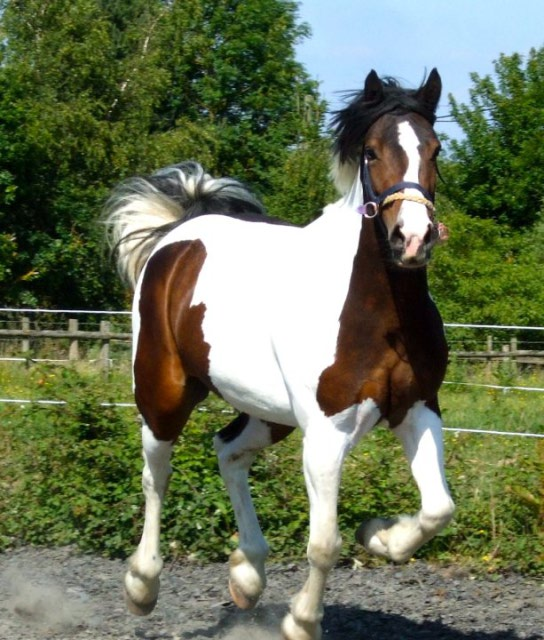 Cars
Question
May
I have a 7 year old mare, Ive owned
Cars
Question
May
I have a 7 year old mare, Ive owned
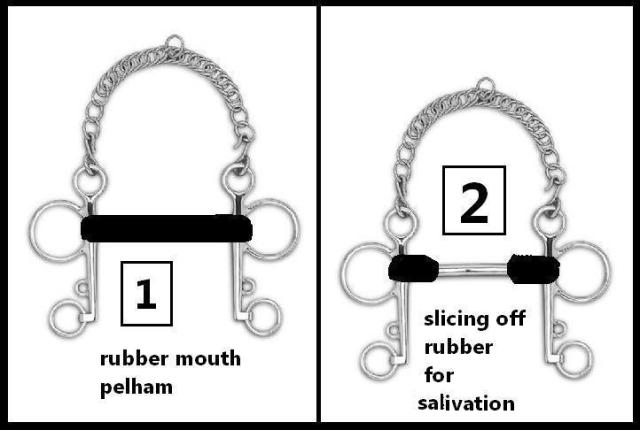 slicing off rubber on the central part of mouthpiece irrespective of any bit it is
Question
slicing off rubber on
hello maam, as you said
slicing off rubber on the central part of mouthpiece irrespective of any bit it is
Question
slicing off rubber on
hello maam, as you said
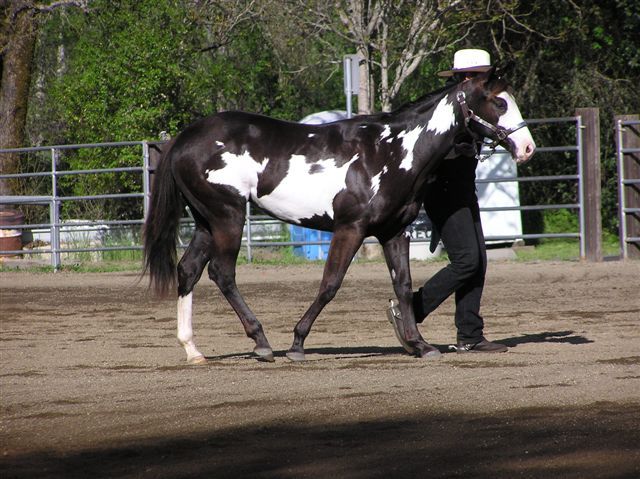 western pleasure lope and head set
QuestionQUESTION: Dear horsehuman,thanx so much for tak
western pleasure lope and head set
QuestionQUESTION: Dear horsehuman,thanx so much for tak
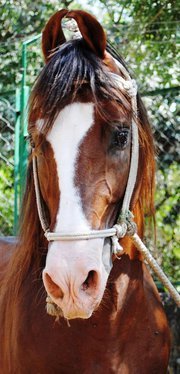 veins coming out on horse face
Question
veins coming out on ho
hello maam, this is a k
veins coming out on horse face
Question
veins coming out on ho
hello maam, this is a k
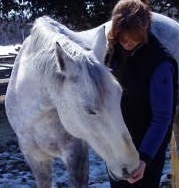 putting halter on
Questionhi,
Im probably going to sound like an complet
putting halter on
Questionhi,
Im probably going to sound like an complet